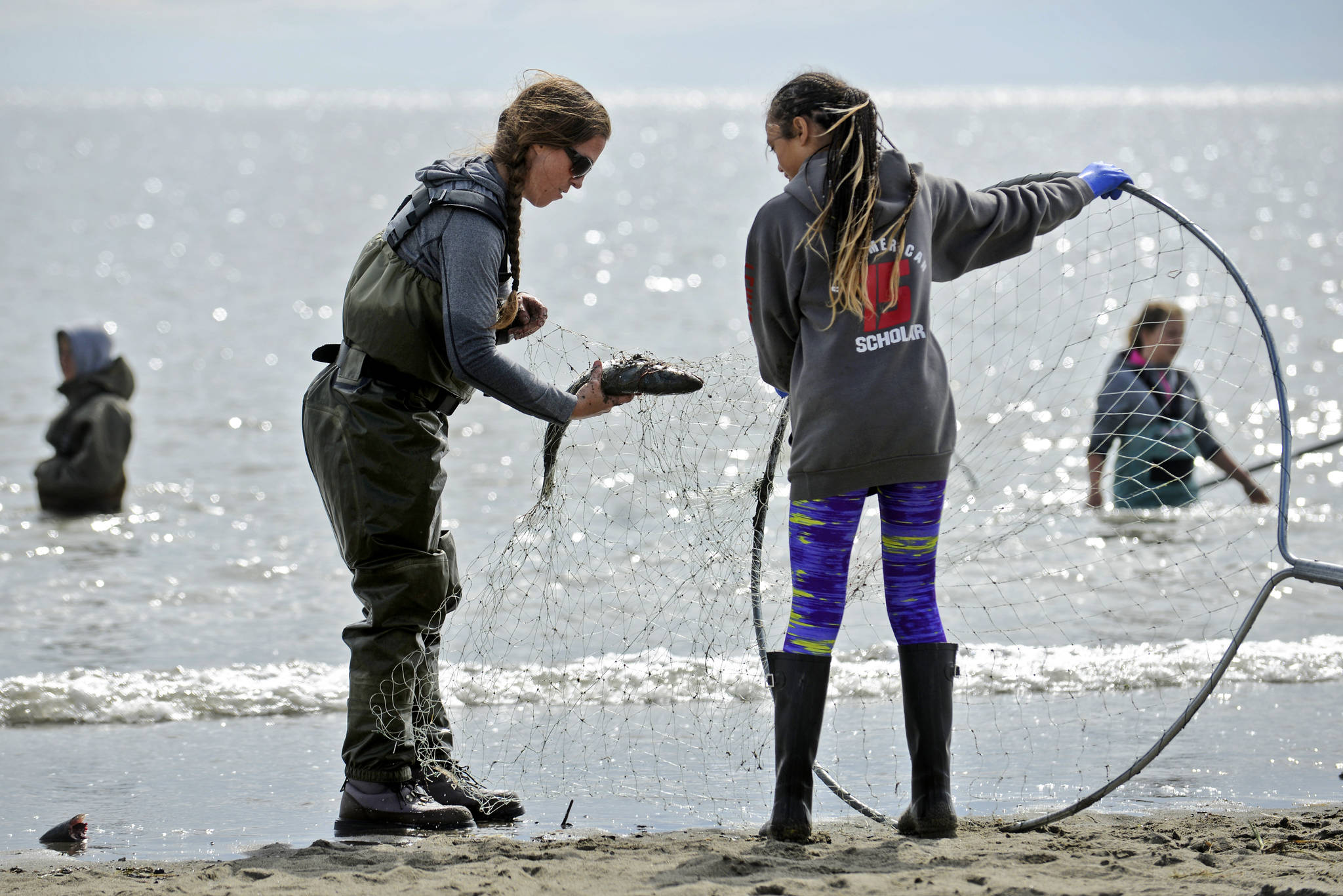Personal-use dipnetting on the Kenai River will end two days early this year, and sportfishermen will be limited to a one fish per day for the remainder of the season.
The Alaska Department of Fish and Game announced a parallel set of restrictions on the dipnet fishery and sportfishery Thursday meant to protect sockeye salmon headed back to the Kenai River. The run has been weaker than expected this year so far, with biologists revising their forecast from about 2.5 million fish to less than 2.3 million Tuesday.
The dipnet fishery, usually open through July 31 from the mouth of the Kenai River up to the Warren Ames Bridge, will close 12:01 a.m. Monday. The inriver sportfishery will be restricted to one fish per day with two in possession effective 12:01 a.m. Monday as well, a cut from the current three per day with six in possession. The bag limit restriction only applies to fish 16 inches or longer — the bag and possession limit for sockeye less than 16 inches will still be 10 per day with 10 in possession, according to an emergency order issued Thursday.
As of Wednesday, 367,895 sockeye had passed Fish and Game’s inriver sonar, a little more than halfway to the bottom end of the sustainable escapement goal of 700,000–1.2 million fish. The assessment earlier this week indicates that the total run is weaker than managers previously thought, said Cook Inlet sportfish management coordinator Mat Miller in the emergency order.
“Sockeye salmon passage by the sonar at river mile 19 have been behind this season, but other indicators suggested perhaps a late run timing,” Miller said. “An assessment of the data earlier this week indicated it may just be a weak run. Without further restrictions to harvest, the goal for Kenai River sockeye salmon is not expected to be achieved. (Fish and Game) staff understand the hardship this has on anglers, as this restriction also affects us.”
Fishermen have been feeling the weaker run. The daily passage rates, which have only topped 60,000 per day once this season so far, make for slow fishing most days. Dipnetters at the mouth of the Kenai River have reported slow fishing throughout most of the season, and upriver, sockeye have been scarce. With the king salmon fisheries in both the Kenai and Kasilof rivers restricted to catch-and-release only, many guides take clients for sockeye instead in July and early August, when both types of salmon are running.
Out in Cook Inlet, commercial fishermen have been significantly behind on sockeye catches — as of July 24, sockeye catches stood at 930,000 fish, compared to the approximately 2.3 million forecast for both upper and lower Cook Inlet.
When Fish and Game revised the forecast to less than 2.3 million, its restricted commercial fishing for both the drift gillnet fleet and the set gillnetters. Drifters can only fish in a restricted area of the inlet until Aug. 1, and setnetters will get no more than 24 hours of fishing per week until Aug. 1, with periods issued by emergency order, and then on Mondays and Thursdays after Aug. 1 for no more than 24 hours per week.
Sockeye salmon returns across the Gulf of Alaska have been weak so far this season, closing fisheries in all user groups. Bristol Bay has been the one exception, with record-breaking harvests in some areas of sockeye salmon. Statewide, commercial sockeye harvests are down about 12 percent over the catch at the same time last year, according to an inseason harvest update from the Alaska Seafood Marketing Institute and the McDowell Group.
Dipnetters who haven’t met their annual Upper Cook Inlet Personal Use limit can still go to the Kasilof River or to Fish Creek in the Mat-Su Valley for sockeye salmon. The Kasilof River dipnet is open until Aug. 7, while Fish Creek is open until July 31.
Reach Elizabeth Earl at eearl@peninsulaclarion.com.

